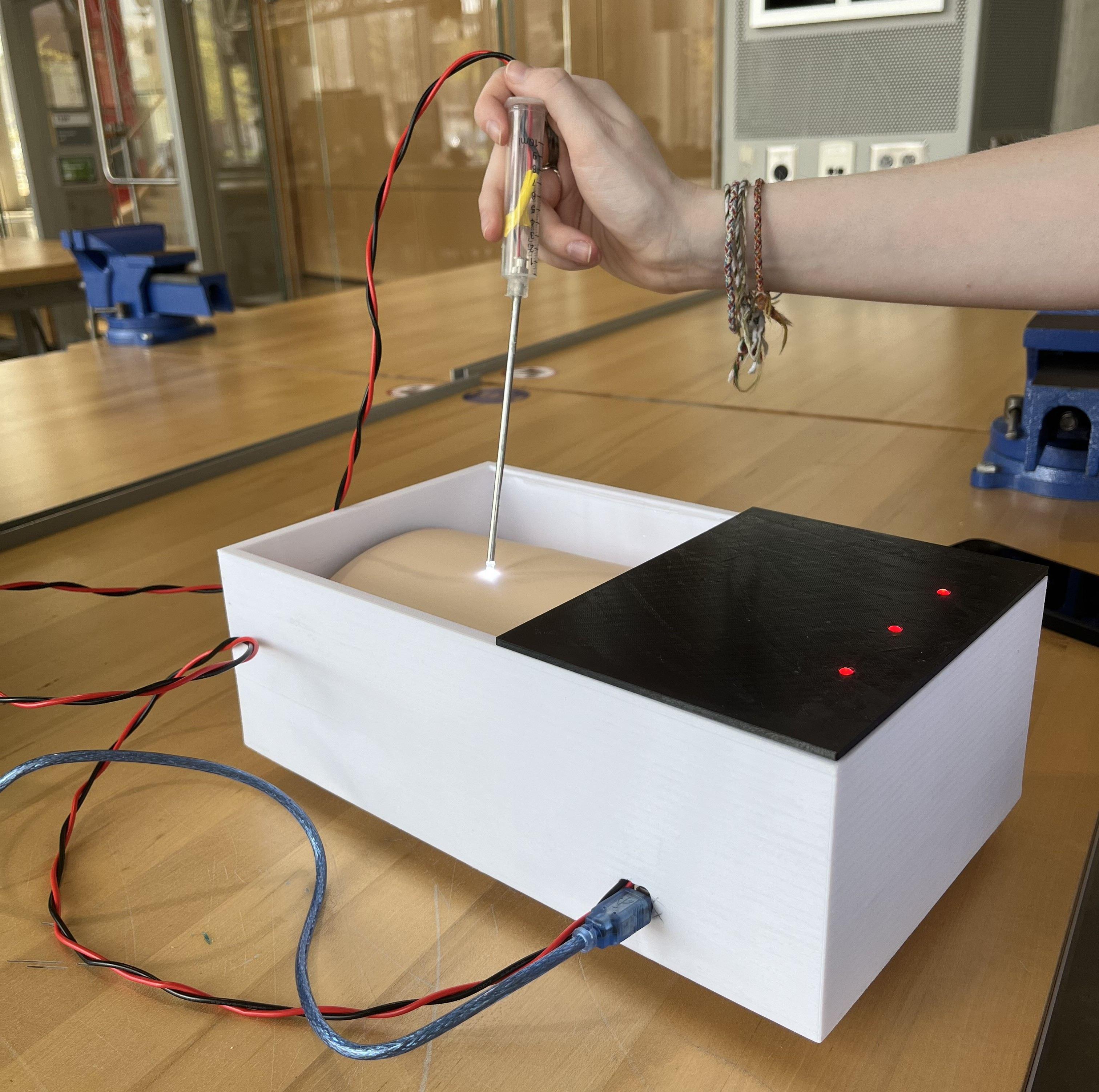Project Description:
Lumbar Puncture (LP) is a common medical procedure that involves inserting a needle into the lower part of a patient’s back with the goal of reaching the subarachnoid space and collecting cerebrospinal fluid. The procedure often fails due to low visibility of the area, and can lead to complications such as back pain, spinal hematoma, and damage to nerve roots. There is also limited training to complete this procedure, with the common clinical method being “See one, do one, teach one.” Training devices do exist, but their prices are hefty, with the cheapest technology still costing around $2000. This project explores a way to improve affordability of lumbar puncture training models in low income communities that enhance diagnostic patient care efficacy. This project aims to improve LP success rate through the development of an educational agar ultrasound phantom model simulating the different layers of spinal tissue coupled with a photodiode/LED electronic system, offering visual feedback to clinicians on the spinal layers. The prototype contains a 3D printed model with two main compartments: 1) a section for agar layers, vertebrae, and synthetic skin, and 2) a section that houses the electronics. The agar section contains layers of agar formulations that mimic the stiffnesses and thicknesses of three main layers of spinal tissue: ligamentum flavum, epidural space, and dura mater. 5%, 2%, 7.5 w/v% agarose solutions were determined as corresponding tissue layer upon literature values and relative stiffness, which were determined through compression testing. The vertebrae are placed in the center of the agar to emulate realistic experience of lumbar puncture. The user will engage with a custom-built needle with an LED in the tip to interface with photodiodes mounted at the bottom of the agar tissue. The electronics compartment houses the circuit and Arduino Uno microcontroller that takes in light intensity values from photodiodes. As the needle tip travels downward through the layers, a labeled red LED will turn on, indicating to the user that their needle has passed through. This process will continue for all three layers mentioned above. This circuit will provide real time feedback for the user to fully understand and learn what each of the layers should feel like as the needle tip passes through the tissue. Overall, this physiologically relevant educational tool will provide more hands-on practice for clinicians performing lumbar punctures and lead to more success when the procedure is conducted on a human patient. Benefits of increased practice and increased success rate include increased patient safety, minimizing the aforementioned complications associated with failed LPs. Healthcare providers benefit as they have more practice of doing the lumbar puncture without needing a patient to do it, increasing practice affordability for lower income hospitals. Patients benefit from reduced physical and psychological harm which can overall increase their safety. In addition, for children and patients who have a fear of needles, this can increase their comfort of the procedure.
